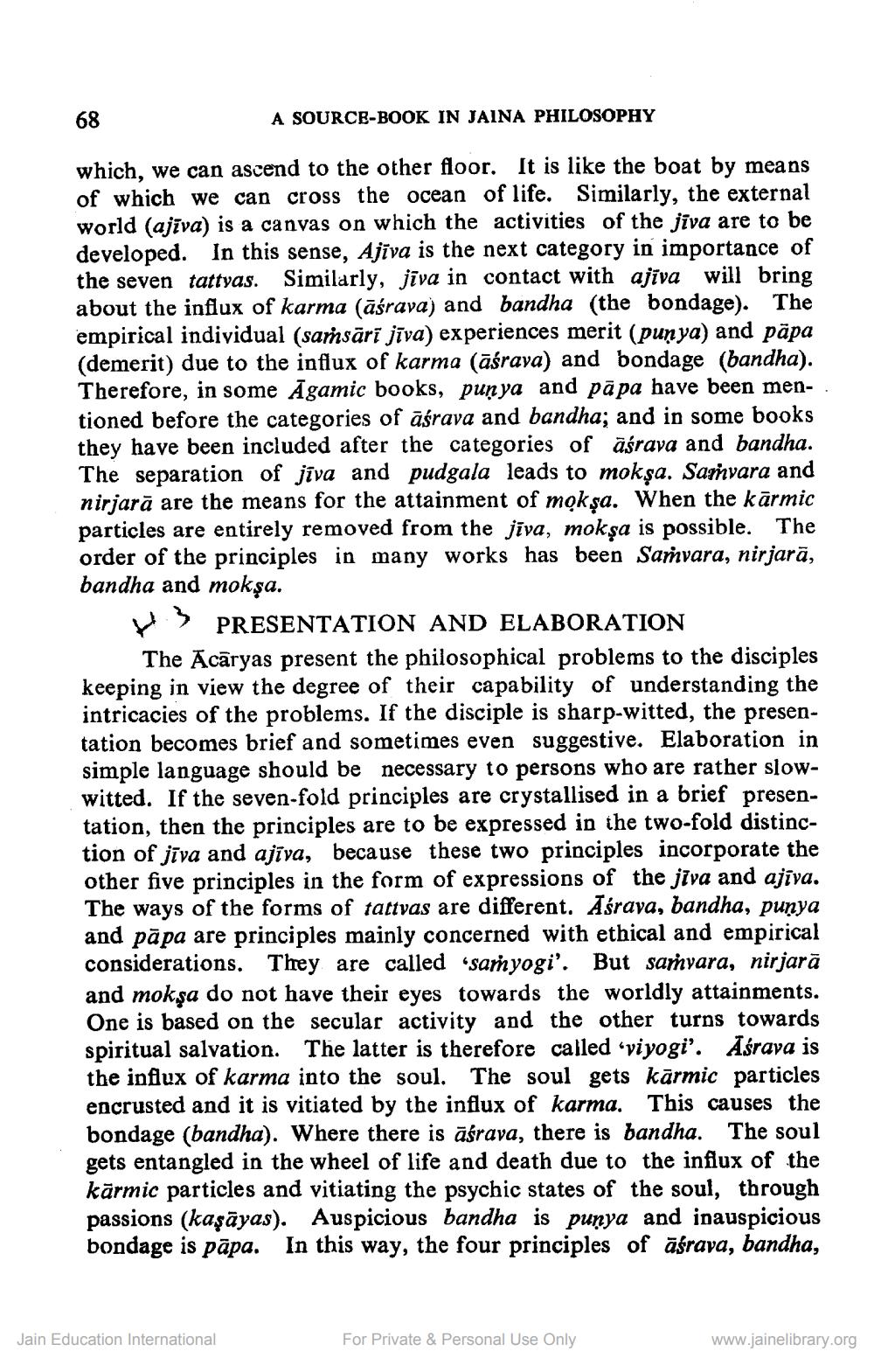________________
A SOURCE-BOOK IN JAINA PHILOSOPHY
which, we can ascend to the other floor. It is like the boat by means of which we can cross the ocean of life. Similarly, the external world (ajīva) is a canvas on which the activities of the jīva are to be developed. In this sense, Ajīva is the next category in importance of the seven tattyas. Similarly, jīva in contact with ajīva will bring about the influx of karma (āśrava) and bandha (the bondage). The empirical individual (sarsārī jīva) experiences merit (punya) and pāpa (demerit) due to the influx of karma (āśrava) and bondage (bandha). Therefore, in some Āgamic books, punya and pāpa have been mentioned before the categories of āśrava and bandha; and in some books they have been included after the categories of aśrava and bandha. The separation of jīva and pudgala leads to mokşa. Samvara and nirjarā are the means for the attainment of mokşa. When the kārmic particles are entirely removed from the jiva, mokşa is possible. The order of the principles in many works has been Sarvara, nirjarā, bandha and mokşa.
WS PRESENTATION AND ELABORATION
The Acāryas present the philosophical problems to the disciples keeping in view the degree of their capability of understanding the intricacies of the problems. If the disciple is sharp-witted, the presentation becomes brief and sometimes even suggestive. Elaboration in simple language should be necessary to persons who are rather slowwitted. If the seven-fold principles are crystallised in a brief presentation, then the principles are to be expressed in the two-fold distinction of jīva and ajīva, because these two principles incorporate the other five principles in the form of expressions of the jiva and ajīva. The ways of the forms of tattvas are different. Āśrava, bandha, punya and pāpa are principles mainly concerned with ethical and empirical considerations. They are called “saṁyogi'. But sanyara, nirjarā and mokşa do not have their eyes towards the worldly attainments. One is based on the secular activity and the other turns towards spiritual salvation. The latter is therefore called “viyogi'. Aśrava is the influx of karma into the soul. The soul gets kārmic particles encrusted and it is vitiated by the influx of karma. This causes the bondage (bandha). Where there is āśrava, there is bandha. The soul gets entangled in the wheel of life and death due to the influx of the kārmic particles and vitiating the psychic states of the soul, through passions (kaşāyas). Auspicious bandha is punya and inauspicious bondage is pāpa. In this way, the four principles of āśrava, bandha,
Jain Education International
For Private & Personal Use Only
www.jainelibrary.org




